Algae are both eukaryotic and prokaryotic organisms that have no roots, stems or leaves but do have chloroplast and other pigments for carrying out photosynthesis. The basic structure of chloroplast consists of a series of flattened membranous vesicle called thylakoids or disc and a surrounding matrix. These thylakoids can be free from one another or grouped to form thylakoid bands.
Here, we are going to discuss the ultrastructure of chloroplast in algae. But first, we need to know about the term ‘Ultra Structure ‘.
Ultra Structure
Best safe and secure cloud storage with password protection
Get Envato Elements, Prime Video, Hotstar and Netflix For Free
Best Money Earning Website 100$ Day
#1 Top ranking article submission website
Ultrastructure is the detailed structure of biological specimens, such as cell, tissue or organ (mitochondria, chloroplast, etc) that can be observed by electron microscope as they are too small to be seen with an optical microscope1. Ultrastructures along with molecular phylogeny has been a reliable way to classify organisms.
Ultra Structure of Chloroplast
Evolution of chloroplast is often seen in algae. Both advanced and primitive type of Chloroplast is present in algae according to their classes. Generally, the ultrastructure of chloroplast in algae consists of thylakoid band, membrane-bounded chloroplast envelops, chloroplast endoplasmic reticulum, phycobilin protein, pyrenoid, storage product, etc.
On the basis of the ultrastructure of the chloroplast, Lee divided the algae into four groups. They are:
- Prokaryotic algae.
- Eukaryotic algae with chloroplasts surrounded by two membrane chloroplast envelop.
- Eukaryotic algae with chloroplasts surrounded by one membrane chloroplast endoplasmic reticulum.
- Eukaryotic algae with chloroplasts surrounded by two membrane chloroplast endoplasmic reticulum.
There are different types of chloroplasts found in eukaryotic algae. The ultrastructure of the chloroplast of 13 classes of algae belonging to 5 types are described below:
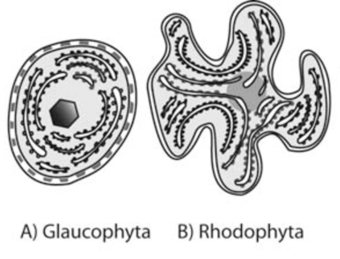
Type – 1 (a)
- One thylakoid per band.
- Two membranes of chloroplast envelops.
- No chloroplast endoplasmic reticulum.
- Peripheral or girdle thylakoid absent (resemble as primitive) – found in the members of primitive Rhodophyceae, Glucophyceae.
- Example: Porphyridium, Bangia, etc.
Type – 1 (b)
- One thylakoid per band.
- No chloroplast endoplasmic reticulum.
- Two membranes of chloroplast envelop.
- Peripheral or girdle thylakoid present (resemble as advanced) which enclose the interset of thylakoids.
- This type of arrangement is usually associated with discoid shaped chloroplasts.
- Found in the members of advanced Rhodophyceae.
- Example: Laurencia, Lomentaria, Batrachospermum, etc.
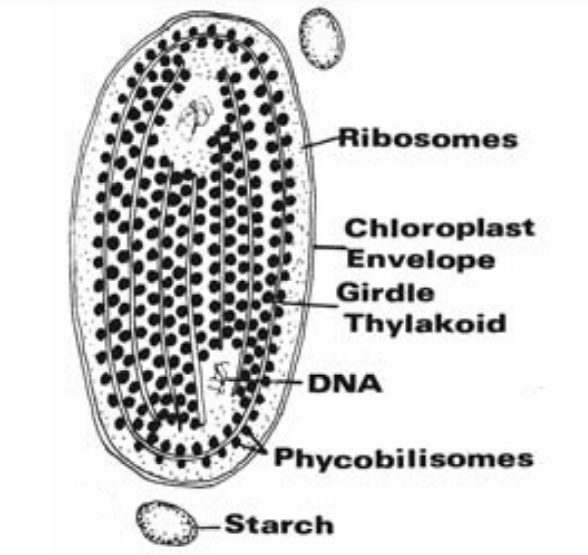
Type – 2
- Two thylakoids per band.
- Two membranes of chloroplast endoplasmic reticulum present in Cryptophyceae. Occasionally show unassociated thylakoids or 3 or 4 thylakoids per band.
- No peripheral thylakoids.
- Phycobilin protein doesn’t appear as aggregates but reported to be within the intra-thylakoid spaces.
- Example: Cryptomonas, Rhodomonas etc.

Type – 3
- One membrane of chloroplast endoplasmic reticulum.
- Two membranes of the chloroplast envelope.
- In Euglenophyceae, three thylakoids are grouped in bands with a gardle or peripheral band but in Dinophyceace peripheral or gardle thylakoids absent.

Type – 4
- Three thylakoids per band.
- Two membranes of chloroplast endoplasmic reticulum.
- Three thylakoids are grouped in bands with a girdle or peripheral band.
- The outer membrane of the chloroplast endoplasmic reticulum is associated with the outer membrane of the nucleus.
- The nucleus is associated with chloroplast.
- Found in the members of Chrysophyta, Prymnesiophya, Bacillariophyta, Phaeophyta, Eustigmatophyta, Xanthophyta and Raphidophyta.

Type 5
- Two to six thylakoids per band, with thylakoids running from one band to the next.
- 2 chloroplast membrane envelop.
- No chloroplast endoplasmic reticulum.
- This type of chloroplast is the most advanced that found in Chlorophyta, Prasinophyceae, Charophyceae, etc.

So, a great diversity of chloroplasts found amongst various algal groups which are the result of an intriguing evolutionary process that involved the acquisition of chloroplast by different eukaryotic organisms.
References & Other Links
- Phycology Lee RE (Forth edition).
- Image sources: Phycology, The Science of Algae by University of Gaza, Palestine.
Revised by
- Abulais Shomrat on 6 July, 2021.
Best safe and secure cloud storage with password protection
Get Envato Elements, Prime Video, Hotstar and Netflix For Free
 Plantlet The Blogging Platform of Department of Botany, University of Dhaka
Plantlet The Blogging Platform of Department of Botany, University of Dhaka
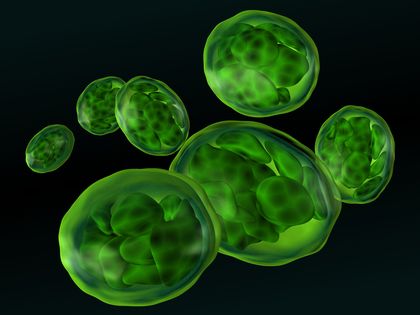

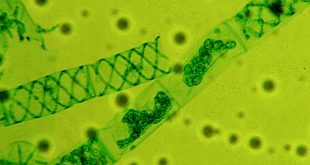
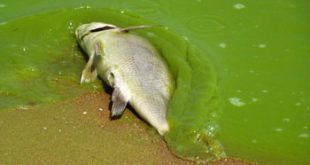
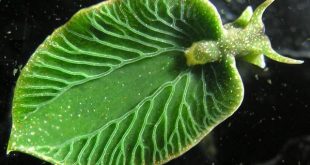
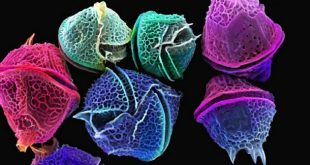
Would be really grateful if a diagram of type 4 was added
Dear Nasif, we have added the image that you have asked for. The other images are also updated with better resolution.
Feel free to comment if you find more loopholes.
THANKS FOR THE CONCISE INFORMATION, NOW I UNDERESTAND BETTER THE ENVELOPE TYPES AND COULD EXPLAIN THEM IN MY CLASSES
We are really delighted to help you out. Stay with Plantlet to explore more and more.
I don’t think the title of your article matches the content lol. Just kidding, mainly because I had some doubts after reading the article.